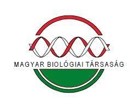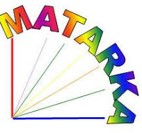Taxonomic delimitation of Iris nyaradyana Prod. using molecular markers
Abstract
Iris nyaradyana Prod. named on the honour of the botanist Erazmus Gyula Nyárády was described in 1934, from rocks of the Upper Mureș/Maros River Valley, Romania. The taxonomic status of the species is still disputed; based on its morphology some authors identify it with I. aphylla, others with I. × germanica. Our study is the first to involve this taxon in molecular analysis, and aims to assess the relationship of the species based on molecular markers. Nuclear ITS and five chloroplast DNA markers (matk5–matk6, psbA5’R–matk8F, petL–psbE, psbM–trnD, trnL5’UAAF–trnFGAA) were used. Altogether 9 Iris species were compared and the sequence of 2 additional species (Crocus sp., Gladiolus sp.) were used as outgroups. One of the chloroplast markers, matk5–matk6 proved to be not variable and therefore was excluded from the analyses. Sequence analysis revealed that Iris nyaradyana is most closely related to I. × germanica, I. variegata, I. pallida and I. aphylla, but based on the molecular pattern, it is not identical to any of these species. Contrary to the opinion of some authors, molecular comparisons suggest that Iris nyaradyana is not a population of I. aphylla, although the high morphological variability of I. aphylla has been reported in previous publications. Templeton-Crandall-Sing (TCS) analysis of the chloroplast DNA sequences found the haplotypes of Iris nyaradyana to be similar to some haplotypes of I. × germanica and I. variegata. On the chloroplast phylogenetic tree, all three Iris nyaradyana individuals formed an independent clade with high support.
References
'13/2001. (V. 9.) KöM rendelet a védett és a fokozottan védett növény- és állatfajokról, a fokozottan védett barlangok köréről, valamint az Európai Közösségben természetvédelmi szempontból jelentős növény- és állatfajok közzétételéről. https://net.jogtar.hu/jogszabaly?docid=A0100013.KOM (Hozzáférés: 2024. április 29.)
Bernátsky J. 1911: A hazai Iris-félék rendszere. Mathematikai és Természettudományi Értesítő 29: 537–552.
Bieberstein A. F. M. 1832: Centuria plantarum rariorum Rossiae meridionalis praesertim Tauriae et Caucasi, iconibus descriptionibusque illustrata 2. [kiadó nélkül], Petropoli, tab. 51
Borchsenius F. 2009: FastGap 1.2. Department of Biosciences, Aarhus University, Denmark. Published online at https://www.aubot.dk/FastGap_home.htm
Dykes W. R. 1924: A handbook of garden Irises. M. Hopkinson & Co, London, 250 pp.
Gouy M., Guindon S., Gascuel O. 2010: SeaView version 4: a multiplatform graphical user interface for sequence alignment and phylogenetic tree building. Molecular Biology and Evolution 27(2): 221–224. https://doi.org/10.1093/molbev/msp259
Guo J., Wilson C. A. 2013: Molecular Phylogeny of Crested Iris Based on Five Plastid Markers (Iridaceae). Systematic Botany 38(4): 987–995. https://doi.org/10.1600/036364413X674724
Hall T. A. 1999: BioEdit: a user-friendly biological sequence alignment editor and analysis program for Windows 95/98/NT. Nucleic Acids Symposium 41: 95–98.
Harpke D., Meng S., Rutten T., Kerndorff H., Blattner F. R. 2013: Phylogeny of Crocus (Iridaceae) based on one chloroplast and two nuclear loci: Ancient hybridization and chromosome number evolution. Molecular Phylogenetics and Evolution 66(3): 617–627. https://doi.org/10.1016/j.ympev.2012.10.007
Henderson N. C. 1992. What is Iris germanica? Bulletin of the American Iris Society 286: 6–11.
Höhn M. 1998: A Kelemen-havasok növényzetéről. Mentor Kiadó, Marosvásárhely, 114 pp.
Köhlein F. 1981: Iris. Germany. Eugen Ulmer GmbH & Co, Stuttgart, 360 pp.
Kumar S., Stecher G., Li M., Knyaz C., Tamura K. 2018: MEGA X: Molecular Evolutionary Genetics Analysis across Computing Platforms. Molecular Biology and Evolution 35(6): 1547–1549. https://doi.org/10.1093/molbev/msy096
Nemati Z., Harpke D., Gemicioglu A., Kerndorff H., Blattner F. R. 2019: Saffron (Crocus sativus) is an autotriploid that evolved in Attica (Greece) from wild Crocus cartwrightianus. Molecular Phylogenetics and Evolution 136: 14–20. https://doi.org/10.1016/j.ympev.2019.03.022
Parnikoza I. Y., Andreev I. O., Bublyk O. M., Spiridonova K. V., Gołębiewska J., Kubiak M., Kuczyńska A., Mystkowska K., Olędrzyńska N., Urasińska B., Ślęzak-Parnikoza A., Górniak M., Wojciechowski K., Didukh Y. P., Kunakh V. A. 2017: The current state of steppe perennial plants populations: A case study on Iris pumila. Biologia 72: 24–35. https://doi.org/10.1515/biolog-2017-0002
POWO 2024: Plants of the World Online. Facilitated by the Royal Botanic Gardens, Kew. Published on the Internet; http://www.plantsoftheworldonline.org/ (Hozzáférés: 2024. április 8.)
Prodan J. 1934: Die Iris-Arten Rumäniens. Buletinul Grădinii botanice şi al Muzeului botanic dela Universitatea din Cluj 14(3–4): 105–198.
Sămărghiţan M., Oroian S., Hiriţiu M., Calalb T. 2016: Plant species of community interest identified in the Călimani-Gurghiu Mountains (Mureş County, Romania). Acta Horti Botanici Bucurestiensis 43: 67–78. https://doi.org/10.1515/ahbb-2016-0006
Shaw J., Lickey E. B., Beck J. T., Farmer S. B., Liu W., Miller J., Siripun K. C., Winder C. T., Schilling E. E. Small R. L. 2005: The tortoise and the hare II: relative utility of 21 noncoding chloroplast DNA sequences for phylogenetic analysis. American Journal of Botany 92(1): 142–166. https://doi.org/10.3732/ajb.92.1.142
Silvestro D., Michalak I. 2012: raxmlGUI: a graphical front-end for RAxML. Organisms Diversity & Evolution 12: 335–337. https://doi.org/10.1007/s13127-011-0056-0
Simmons M. P., Ochoterena H., Carr T. G. 2001: Incorporation, relative homoplasy, and effect of gap characters in sequence-based phylogenetic analyses. Systematic Biology 50(3): 454–462.
Singh N., Rana T. S. 2016. Inter cultivar relationships in Gladiolus cultivars using internal transcribed spacer (ITS) region. Kézirat.
Stamatakis A. 2014: RAxML Version 8: A tool for phylogenetic analysis and post-analysis of large phylogenies. Bioinformatics 30(9): 1312–1313. https://doi.org/10.1093/bioinformatics/btu033
Tutin T. G., Heywood V. H., Burges N. A., Moore D. M., Valentine D. H., Walters S. M., Webb D. A. 1980: Flora Europaea: Volume 5. Alismataceae to Orchidaceae (Monocotyledones). Cambridge University Press, Cambridge, 476 pp.
Vas I. I., Mócsy I. 2017: Raport de Mediu – Plan Urbanistic General Comuna Stânceni. Agenția Națională pentru Protecția Mediului, Ministerul Mediului, Bucureşti, 107 pp.
Váczy K., Bartha S. 1988: Nyárády Erazmus Gyula, a természettudós. Kriterion Könyvkiadó, Bukarest, 158 pp.
WFO 2024: Iris nyaradyana Prodan. World Flora Online. Published on the Internet; http://www.worldfloraonline.org/taxon/wfo-0000783676 (Hozzáférés: 2024. április 8.)
White T. J., Bruns T., Lee S., Taylor J. 1990: Amplification and direct sequencing of fungal ribosomal RNA genes for phylogenetics. In: Innis M. A., Geldfand D. H., Sninsky J. J., White T. J. (eds) PCR protocols: a guide to methods and applications. Academic Press, San Diego, pp. 315–322.
Wilson C. A. 2003: Phylogenetic relationships in Iris series Californicae based on ITS sequences of nuclear ribosomal DNA. Systematic Botany 28(1): 39–46.
Wilson C. A. 2017: Sectional Relationships in the Eurasian Bearded Iris (subgen. Iris) Based on Phylogenetic Analyses of Sequence Data. Systematic Botany 42(3): 392–401. https://doi.org/10.1600/036364417X695970
Wróblewska A., Brzosko E., Chudzińska E., Bordács S., Prokopiv A. I. 2010: Cytotype Distribution and Colonization History of the Steppe Plant Iris aphylla. Annales Botanici Fennici 47(1): 23–33.
Világháló-hivatkozás
http1 – GenBank. National Library of Medicine, https://www.ncbi.nlm.nih.gov/genbank/ (Hozzáférés: 2024. március 3.)


















